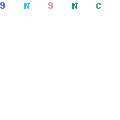India’s new education policy comes with a motto India, a global knowledge superpower.
What is Education Policy…?
The principles and government policies within the educational sphere also because of the collection of laws and rules that govern education systems’ operation.
Who’s the founder of education and its policies..?
Horace Mann was born on May 4, 1796, in Franklin, Massachusetts, known as the father of education. It is compulsory for all children from ages six to 14 and provided free of charge at public schools in India.
Three types….
Three main types of education, namely, Formal, Informal and Non-formal and here are 28 States in India as of July 2020.
Who’s is the Education minister..?
The head of the Ministry of Education Government of India is Ramesh Pokhriyal.
What’s new..?
With the emphasis on infancy, Early Childhood Care and Education, the 10+2 structure of school curricula is replaced by a 5+3+3+4 curricular structure like corresponding to ages 3-8, 8-11, 11-14, and 14-18 years respectively.
PURPOSE OF POLICY:
The new policy aims for universalization of education from pre-school to secondary level with 100 percent Gross Enrolment Ratio (GER) education by 2030 and aims to develop GER in higher education to 50 percent by 2025.

New Education Policy 2020: Important highlights
Ø Schooling starts at the age of three years now.
Ø Mother tongue as medium of instruction.
Ø NO UGC, AICTE, NCTE.
Ø science, arts, commerce gets ancient.
Ø FYUP Program Returns & No More Dropouts.
History of Education Policy…?
Let’s go back to The Nehru government sponsored the development of high-quality scientific education institutions such as the Indian Institutes of Technology. In 1961, the Union government formed the National Council of Educational Research and Training (NCERT).
A “radical restructuring” was proposed in 1968 with equal educational opportunities in order to achieve national integration and greater cultural and economic development.
Rajiv Gandhi introduced a new National Policy on Education known to be the “child-centered approach” in primary education, and launched “Operation Blackboard” to improve primary schools nation established a policy also called for the creation of the “rural university”.
P.V. Narasimha Rao government in 1992 and Former Prime Minister Manmohan Singh adopted a new policy based on the “Common Minimum Programme” of his United Progressive Alliance (UPA) and Programme of Action in 1992, under the National Policy on Education (NPE).

National Education Policy 2020
In 2019, the Ministry of Human Resource Development released a Draft New Education Policy 2019, which was followed by a number of public consultations that formed a 10+2 system to a 5+3+3+4 system structure to courageous learning for students based on cognaitive development of children.
July 2020 cabinet approved a new National Education Policy with an aim to introduce several changes to the existing Indian education system.
Related Article
Importance of Newspaper for upsc student
New Education Policy 2020 Highlights:
The INDIA New Education Policy came into existence on Wednesday, July 29, at noon by the Union cabinet, which is Prakash Javadekar, and Human Resource Development approved the policy that aims t the country’s education system on the NEP- 2020. Earlier on May 1, Prime Minister Narendra Modi had reviewed the NEP- 2020 by former Indian Space Research Organisation (ISRO) chief K Kasturirangan.
HIGHLIGHTS:
- The new academic session will begin in the month of September till October, and the delay is due to the unprecedented coronavirus disease (Covid-19) outbreak, and the aim is to introduce the policy before the new session.
- Every child learns at least one vocation and exposed to several more.
- A sampling of important vocational crafts, such as carpentry, electric work, metalwork, gardening, pottery making, etc., as decided by States and local communities during Grades 6-8.
- Pre-school sections covering at least one year of early childhood care and education will be added to Kendriya Vidyalayas and other primary schools around the nation, particularly in disadvantaged areas.
- Under the aegis of the Ministry of Defence, State Governments may encourage opening NCC wings in their secondary and higher secondary schools, including those located in tribal-dominated areas.
- Free boarding facilities will be built – matching the standard of Jawahar Navodaya Vidyalayas, particularly for students from socio-economically disadvantaged backgrounds.
- The three-language learned by children will be the choices of States, regions, and of the students, so long as at least two of the three languages are native to India.
- Wherever possible, the medium of instruction until at least Grade 5, but preferably till Grade 8 and beyond, will be the home language/mother-tongue/local language/regional language.
- Experiential learning will include hands-on learning, arts-integrated and sports-integrated education, story-telling-based pedagogy, among others, as standard pedagogy. Classroom transactions will shift towards competency-based learning and education.
- Subjects such as physical education, arts and crafts, and vocational skills, in addition to science, humanities, and mathematics, will be incorporated throughout the school curriculum.
- The mandated content will focus on key concepts, ideas, applications, and problem-solving.

